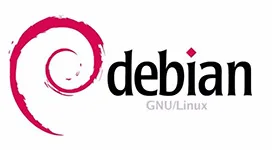I want add shell or bash to my image to execute installation command.
I have copied the /bin/bash on my VM on to my image on Dockerfile:
COPY /bin/bash /bin/
But when I execute the docker command:
docker run -it --entrypoint "/bin/bash" <my_image>
Then I get the following error :
/bin/bash: error while loading shared libraries: libtinfo.so.5: cannot open shared object file: No such file or directory
Thanks for your help

 Question posted in
Question posted in 

3
Answers
That’s because you’re trying to use dynamic-compiled
bashin indockerwithoutglibcsupport.TL;DR
bash-staticinstead of classicbashYou may download it or run
./build.shbashforalpine: add this line to yourDockerfile:RUN apk add --no-cache bashAlpineis amusl-based distroMany docker images are built with
alpineas base image:alpine(usually) is small & fast:Here are the sizes of the images of popular operating systems.
source: A Breakdown of Operating Systems of Dockerhub
musldoesn’t containlibtinfoSee more about difference between
glibcandmuslFunctional differences from glibcP.S. you can run
bash-staticeven in empty container fromscratchYou could probably add busybox in now.
Google’s distroless images have versions tagged
debug, which containbusyboxexecutable (withshbundled in).If you have to, you can arguably use them even in production (which defeats the purpose of increased security – such as hiding environment variables and protecting scripted apps code).
Usage example of the
distroless/baseimage withdebugtag:You can do it by copying the statically compiled shell from official
busyboximage in a multi-stage build in your Dockerfile. Or justCOPY --fromit.The static shell doesn’t have so many dependencies, so it will work for a range of different base images. It may not work for some very advanced cases, but otherwise it gets the job done.
The statically compiled shell is tagged with
uclibc. Depending on your base image you may have success with other flavours ofbusyboxas well.Example:
The single-line
COPY --fromdirectly from image would also work: